
- Biology - Home
- Biology - Structure and Functions
- The Fundamental Unit of Life
- Biology - Tissues
- Biology - Animal Tissue
- Diversity in Living Organisms
- Biology - Plantae Kingdom
- Biology - Animalia Kingdom
- Biology - Vertebrata
- Biology - Transportation in Humans
- Biology - Transportation in Plants
- Biology - Excretion
- Biology - Control and Coordination
- Biology - Hormones in Animal
- How do Organisms Reproduce?
- Biology - Sexual Reproduction
- Biology - Reproduction in Animals
- Reaching the Age of Adolescence
- Biology - Heredity and Evolution
- Biology - Life Processes
- Biology - Respiration
- Microorganisms: Friend and Foe
- Biology - Why do We Fall Ill
- Biology - Natural Resources
- Biology - Our Environment
- Conservation of Plants and Animals
Biology - Tissues
Introduction
A group of cells that are similar in structure and work together to accomplish a particular function is known as tissue.

-
Tissues are categorized as −
Plant Tissue &
Animal Tissue
Lets discuss them in brief −
Plant Tissue
-
Following are the major types of plant tissue −
Meristematic Tissues
-
Permanent Tissues
-
Simple Permanent Tissues
Parenchyma
Collenchyma
Sclerenchyma
Epidermis
-
Complex Permanent Tissue
Xylem
Phloem
-
Meristematic Tissue
Meristematic tissue mainly consists of actively dividing cells, and helps in increasing the length and thickening the stems of the plant.
Meristematic tissue, commonly, present in the primary growth regions of a plant, for example, in the tips of stems or roots.
Depending on the region (where the meristematic tissues are found); meristematic tissues are classified as apical, lateral, and intercalary (see the image given below).
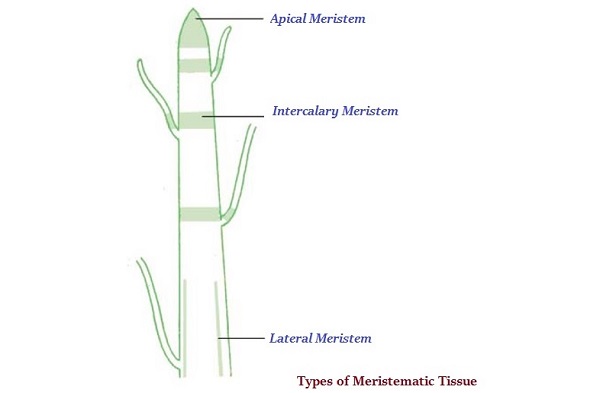
Apical meristem (as shown in the above image) is present at the growing tips of stems and roots and helps in their growth.
Lateral Meristem is found in stem or root region and helps in their growth.
Intercalary meristem is found at the base of the leaves or internodes (on twigs) and helps in growth.
Permanent Tissue
Cells of meristematic tissue later differentiate to form different types of permanent tissue.
-
Permanent Tissue is further categorized as −
Simple Permanent Tissue and
Complex Permanent Tissue
Simple Permanent Tissue
-
Simple Permanent Tissue further categorized as −
Parenchyma
Collenchyma
Sclerenchyma
Epidermis
Parenchyma tissue provides support to plants and also stores food.
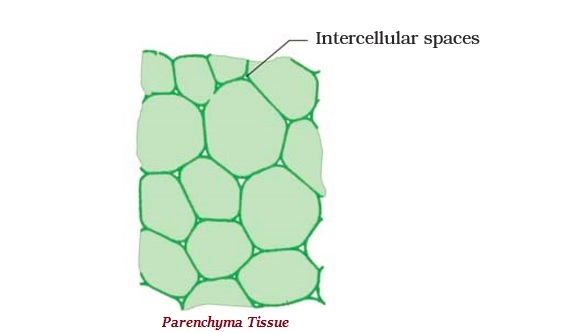
Sometimes, parenchyma tissue contains chlorophyll and performs photosynthesis, in such a condition, it is known as collenchyma.
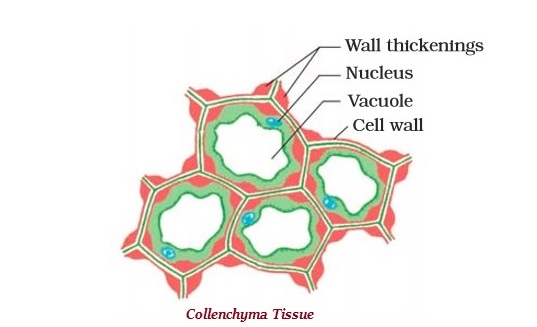
The collenchyma tissue provides flexibility to plant and also provides mechanical support (to plant).
The large air cavities, which are present in parenchyma of aquatic plants, give buoyancy to the plants and also help them float, are known as aerenchyma.
The Sclerenchyma tissue makes the plant hard and stiff. For example, the husk of a coconut is made up of sclerenchymatous tissue.
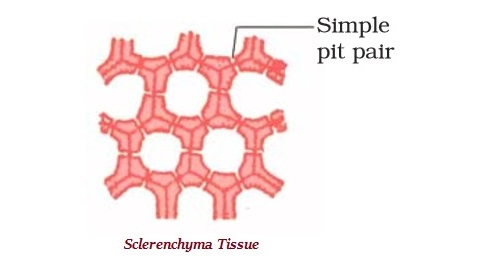
The cells of Sclerenchyma tissue normally are dead.
The outermost layer of cells is known as epidermis.
The epidermis is usually made up of a single layer of cells.
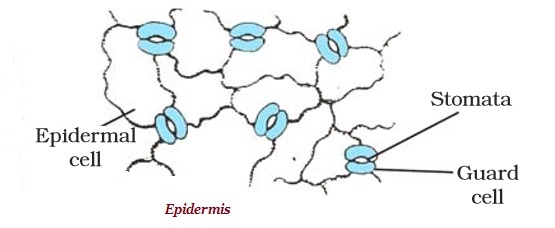
The entire surface of a plant has the outer covering of epidermis, which protects all the parts of the plant.
Complex Permanent Tissue
The complex tissue, normally, consists of more than one type of cells which work together as a unit.
Complex tissues help in the transportation by carrying organic material, water, and minerals up and down in the plants.
-
Complex Permanent Tissue is categorized as;
Xylem and
Phloem

Xylem, normally, consists of tracheid, vessels, xylem parenchyma, and xylem fibers.
Xylem is accountable for the conduction of water and mineral ions/salt.
-
Phloem, normally, is made up of four types of elements namely −
Sieve tubes
Companion cells
Phloem fibers and
Phloem parenchyma
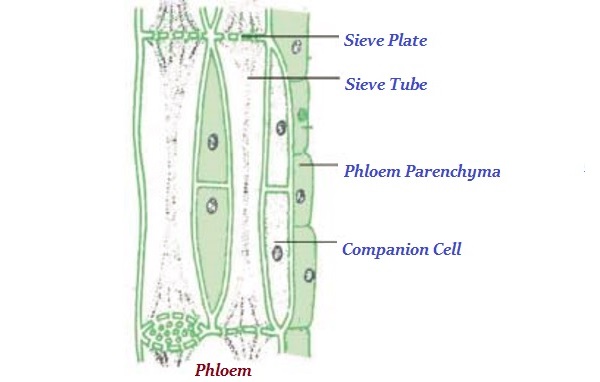
Phloem tissue transports food from leaves to other parts of the plant.